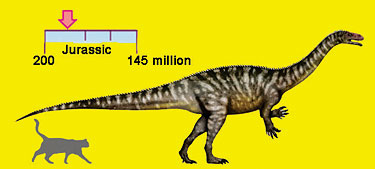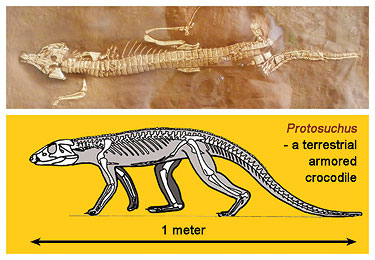PALEO HAPPENINGS June 2021 |
|||||||||
| Unlikely tales from the Jurassic Dunesby Martin Lockley, Moab Giants | |||||||||
Last month’s Paleo Happenings was a reminder of the Dinosaur Diamond’s fame, is mostly built around well-known, land-based dinosaurian giants like Brachiosaurus, Diplodocus and Stegosaurus, not to mention Allosaurus, the Utah state fossil. These large animals roamed steppe-like, Late Jurassic landscapes with trees, ferns and other vegetation, but no grasses as yet. However, in the Early and Middle Jurassic epochs, a span of ~35 million years, much of the Dinosaur Diamond and what is now half the American southwest was a sandy, Sahara-like desert, or “erg,” –also no grasses – that we can contrast with a “reg” or rocky desert, more like parts of today’s west. The Navajo Sandstone is an Early Jurassic fossilized dune field known to geologists the world over. The Utah Geological Survey state that “the Navajo erg is likely to have been larger than the combined dune fields of the modern Sahara” with dunes more than 100 feet high. In 1970s the Utah geologist William Stokes expressed surprise that that this ancient desert yielded evidence of life in the form of fossil wood, animal tracks and occasional bones. Among the very few dinosaurs found in these dunes is an animal named Seitaad, recently found on Comb Ridge. This small “prosauropod,” was a type of pre-sauropod ancestor of the long necked, long-tailed, large sauropods. Its name in Navajo refers to a ‘sand monster’ which buried its victims in the dunes. Seitaad was not so monstrous, measuring only ~3 feet (1 meter) long from shoulder to hip and about 10 feet from nose to tail.
Dinosaurs are classified as “archosaurs” (archaic reptiles) along with their cousins the crocodiles and the pterosaurs. They effectively dominated land, air and water environments in the Mesozoic. But, all things change with time, and paleontologists have shown that Jurassic crocodiles were unlike their modern descendants. Many were quite small and adapted to life on land. The aptly named Protosuchus (“proto croc”) found in Arizona was only a meter long. This medium-sized form might have given you a nasty nip at knee level, but it was no man- or dinosaur-eating monster, like its much later descendants known to Crocodile Dundee.
Among nature’s unexpected reptile behaviors, lizards that walk on water – actually they run – are certainly an unusual and unlikely phenomenon. Likewise, miniature armored crocodiles running around in Jurassic sand dunes surely rank among the region’s more unexpected and unlikely occurrences. |
|||||||||


